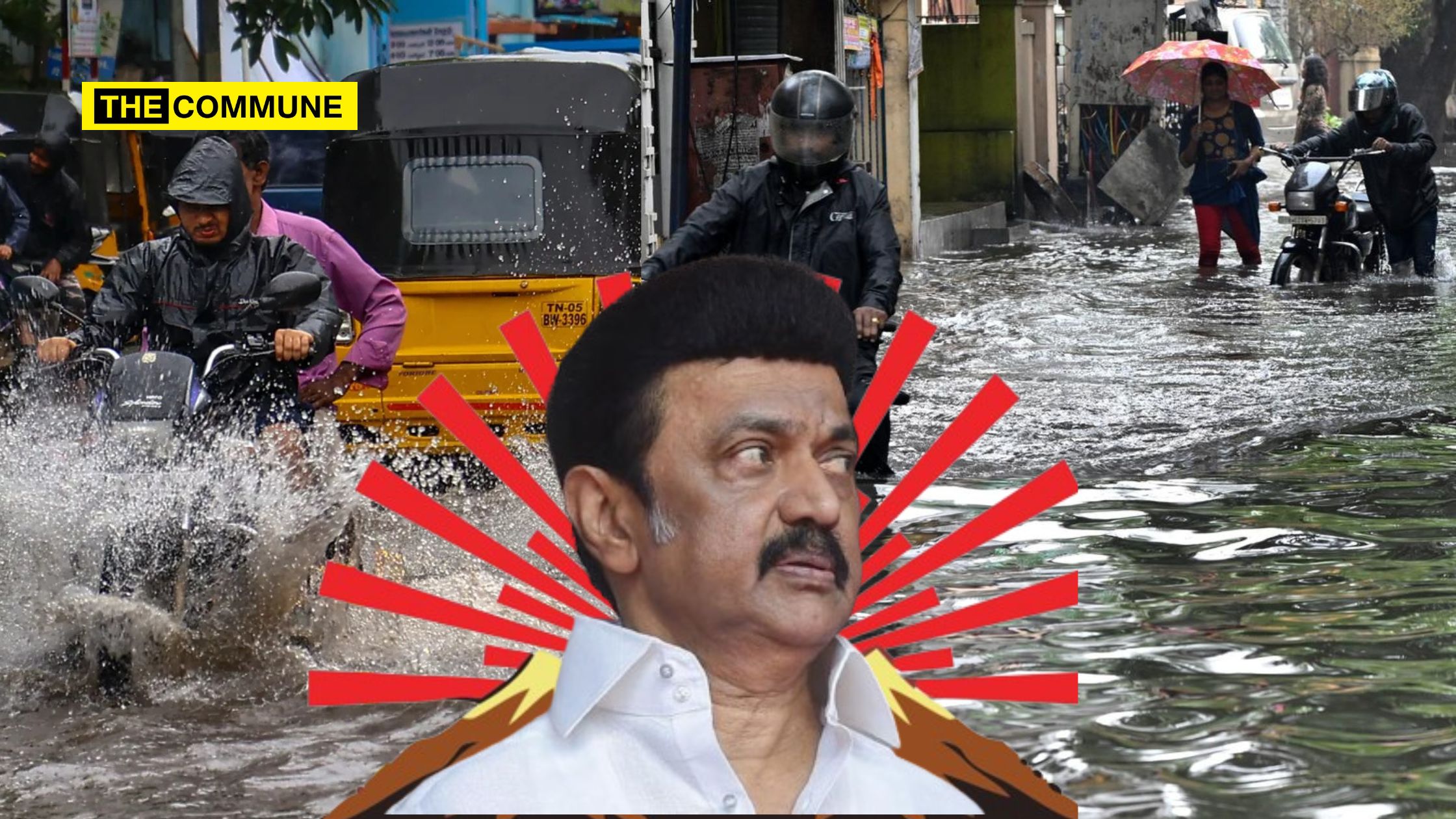
Once again, Chennai, the capital city of Tamil Nadu, governed under the Dravidian model that proudly claimed, “Let the rain come, we are ready,” faced the brunt of severe inundation. A relatively modest 10 cm of rain on 12 December 2024, spread over 36 hours, would not typically be considered heavy, yet it led to widespread flooding in at least 135 areas across the city. Many residents found themselves wading through knee-deep water.
The morning rains disrupted office-goers and businesses, while areas such as Velachery, Vyasarpadi, Kodungaiyur, and Pulianthope experienced serious flooding. Key roads like GST Road and Anna Salai were inaccessible for several hours due to inundation of subways like Pazhavanthangal and Aranganathan, causing major traffic jams.
The Greater Chennai Corporation (GCC) deployed around 50 pumps to drain water from over 100 locations, including the submerged subways, by the evening. Despite their efforts, some areas, like AGS Colony in Velachery, still faced water levels of 2-3 feet, even with retention walls built along the Veerangal Odai flood channel. Geetha Ganesh, a resident of AGS Colony, explained, “Without the retention wall, we would have faced up to five feet of water. Now, there’s still stagnation due to water from surrounding areas flowing into ours. The drainage gradient issue needs fixing.” Clogged Storm Water Drains (SWDs) were identified as a major cause of the flooding, as the water had nowhere to drain.
In Anna Nagar and Pulianthope, the lack of a retention wall at Otteri Nullah caused a breach, resulting in flooding in the area. The GCC managed to collect and pump out this water by directing it to less sensitive canal spots along the route.
Interestingly, the rains helped flush out sewage from key waterways such as Otteri Nullah, Mambalam Canal, Veerangal stream, and even the Cooum and Adyar Rivers. Experts suggest this may improve groundwater levels along these watercourses. Hydrogeologist J Saravanan from Rain Centre commented, “Past studies have shown that freshwater aquifers along the Adyar River, particularly near Malar Hospital, could benefit from this flood. While it provides temporary relief, the permanent solution lies in diverting sewage.”
In the aftermath of the rains, eight trees were felled and cleared. Mayor R. Priya visited the relief operations at the GCC’s integrated control center and instructed that the remaining areas be addressed by the end of the night.
(With inputs from TOI)
Subscribe to our channels on Telegram, WhatsApp, and Instagram and get the best stories of the day delivered to you personally.




